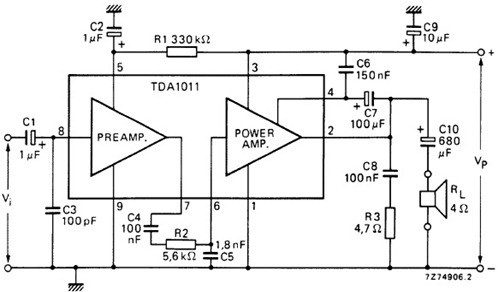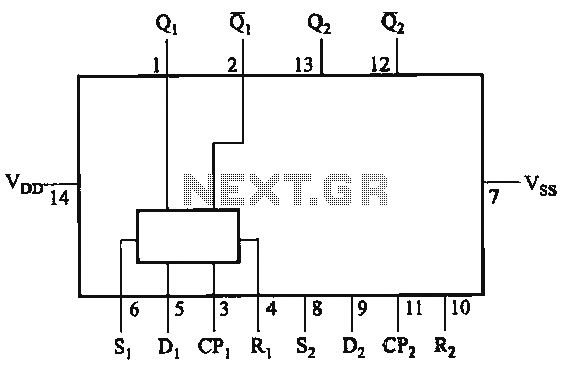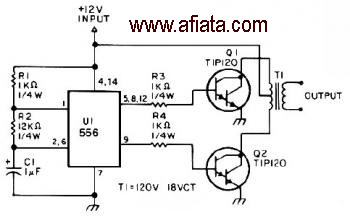
Triac Testing Circuit PCB

This document describes a simple triac tester circuit that can also be utilized for testing silicon-controlled rectifiers (SCRs) and both PNP and NPN transistors. The circuit operates on 3V DC, which can be derived from a Zener diode combined with a step-down transformer and rectifier arrangement. Alternatively, it can be powered using two pencil cells. For SCR testing, the device should be inserted into the designated socket with terminals placed in the correct slots. The switch S3 should be set to the "on" position (toward "a"), and switch S1 should be pressed momentarily. The LED will illuminate and remain lit until switch S2 is pressed or the mains supply to the step-down transformer is interrupted using switch S4. This indicates that the SCR is functional. When switch S3 is in the "off" position (toward "b"), a milliammeter or multimeter can be connected to monitor the current through the SCR. If the SCR is defective, the LED will not light. If the SCR is leaky, the LED will glow continuously. If the LED lights only when switch S1 is pressed and turns off when switch S2 is pressed, the SCR is confirmed to be good.
For triac testing, the MT1 terminal should initially be connected to point A (positive), MT2 to point K (negative), and the gate to point G. Pressing switch S1 momentarily will illuminate the LED, which will turn off when switch S2 is pressed. If switch S5 is pressed, the LED should not light. Reversing the connections of MT1 and MT2 (MT1 to negative and MT2 to positive) should not cause the LED to glow when switch S2 is pressed for a functional triac. However, pressing switch S5 will cause the triac to conduct, resulting in the LED lighting up. A leaky triac will exhibit behavior similar to a faulty SCR. The triac is considered good only if the LED lights up during both tests. Before connecting any SCR or triac, it is essential to verify the connection of the anode/MT1 to the case.
It is noteworthy that a triac consists of two SCRs connected in reverse parallel; one accepts a positive pulse for conduction while the other accepts a negative pulse. Transistors can also be tested using this circuit by placing a resistor (approximately 1 kilo-ohm) between the junction of switches S1 and S5 and point G. The collector of an NPN or the emitter of a PNP transistor should be connected to the positive side (point A), while the emitter of an NPN and collector of a PNP transistor should be connected to the negative side. The conventional current direction and forward biasing conditions for PNP and NPN transistors are illustrated in the accompanying figure. For an NPN transistor, pressing S1 will cause the LED to glow, and it will turn off upon release, indicating that the transistor is functional. Conversely, for a PNP transistor, the LED will illuminate when switch S5 is pressed and will turn off upon release, indicating the transistor is good. A leaky or short-circuited SCR or transistor will be indicated by a continuous glow of the LED without any switch being pressed.
The circuit design integrates multiple components to facilitate testing of various semiconductor devices. The primary components include the Zener diode, which regulates the voltage, the step-down transformer that reduces the AC voltage to a manageable level, and the rectifier that converts AC to DC. The LED serves as an indicator for the operational status of the devices under test, while the switches allow for user interaction to initiate testing and monitor the results. The inclusion of a milliammeter or multimeter enhances the circuit's functionality by providing quantitative measurements of the current flowing through the SCR. This comprehensive approach allows for effective testing and troubleshooting of SCRs, triacs, and transistors, ensuring reliable performance in electronic applications.Here is a very simple triac tester circuit which can be used for testing of SCRs as well as triacs. The circuit could even be used for checking of pnp and npn transistors. The circuit works on 3V DC, derived using a zener diode in conjunction with a step-down transformer and rectifier arrangement, as shown in the figure. Alternatively, one may pow er the circuit using two pencil cells. For testing an SCR, insert it in the socket with terminals inserted in proper slots. Slide switch S3 to on` position (towards a`) and press switch S1 momentarily. The LED would glow and keep glowing until switch S2 is pressed or mains supply to step-down transformer is interrupted for a short duration using switch S4. This would indicate that the SCR under test is serviceable. With switch S3 in off` position (towards b`), you may connect a milliammeter or a multimeter to monitor the current flowing through the SCR.
If the SCR is no good, ` the LED would never glow. If the SCR is faulty (leaky), the LED would glow by itself. In other words, if the LED glows only on pressing switch S1 momentarily and goes off on pressing switch S2, the SCR is good. For testing a triac, initially connect its MT1 terminal to point A (positive), MT2 to point K (negative), and its gate to point G.
Now, on pressing switch S1 momentarily, the LED would glow. On pressing switch S2 momentarily, the LED would go off. Next, on pressing switch S5, the LED will not glow. Now reverse connections of MT1 and MT2, i. e. connect MT1 to the negative and MT2 to the positive side. For a good working triac, S2 would not initiate conduction in the triac and the LED would remain off. On the other hand, momentary depression of S5 would initiate conduction of the triac and LED1 would glow.
The indication of a leaky triac is similar to that of an SCR. If, during both the above-mentioned tests, the LED lights up, only then the triac is good. Before connecting any SCR/triac in the circuit, please check its anode/MT1`s connection with the case. (Note: A triac is actually two SCRs connected back to back. The first accepts positive pulse for conduction while the second accepts negative pulse for conduction.
) You can also check transistors with this circuit by introducing a resistor (about 1 kilo-ohm) between the junction of switches S1 and S5 and point G. The collector of npn or emitter of pnp transistor is to be connected to positive (point A), while emitter of an npn and collector of a pnp transistor is to be connected to Fig.
2 indicates the conventional current direction and forward biasing condition for pnp and npn transistors. If the transistor under test is of npn type, on pressing S1, the LED glows, and on releasing orlifting the finger, it goes off, indicating that the transistor is good.
For pnp transistor, the LED glows on pressing switch S5 and goes off when it is released. This indicates that the transistor under test is good. A leaky or short-circuited SCR or transistor would be indicated by a permanent glow of the LED by itself, i. e. without pressing switch S1 or S5. 🔗 External reference
For triac testing, the MT1 terminal should initially be connected to point A (positive), MT2 to point K (negative), and the gate to point G. Pressing switch S1 momentarily will illuminate the LED, which will turn off when switch S2 is pressed. If switch S5 is pressed, the LED should not light. Reversing the connections of MT1 and MT2 (MT1 to negative and MT2 to positive) should not cause the LED to glow when switch S2 is pressed for a functional triac. However, pressing switch S5 will cause the triac to conduct, resulting in the LED lighting up. A leaky triac will exhibit behavior similar to a faulty SCR. The triac is considered good only if the LED lights up during both tests. Before connecting any SCR or triac, it is essential to verify the connection of the anode/MT1 to the case.
It is noteworthy that a triac consists of two SCRs connected in reverse parallel; one accepts a positive pulse for conduction while the other accepts a negative pulse. Transistors can also be tested using this circuit by placing a resistor (approximately 1 kilo-ohm) between the junction of switches S1 and S5 and point G. The collector of an NPN or the emitter of a PNP transistor should be connected to the positive side (point A), while the emitter of an NPN and collector of a PNP transistor should be connected to the negative side. The conventional current direction and forward biasing conditions for PNP and NPN transistors are illustrated in the accompanying figure. For an NPN transistor, pressing S1 will cause the LED to glow, and it will turn off upon release, indicating that the transistor is functional. Conversely, for a PNP transistor, the LED will illuminate when switch S5 is pressed and will turn off upon release, indicating the transistor is good. A leaky or short-circuited SCR or transistor will be indicated by a continuous glow of the LED without any switch being pressed.
The circuit design integrates multiple components to facilitate testing of various semiconductor devices. The primary components include the Zener diode, which regulates the voltage, the step-down transformer that reduces the AC voltage to a manageable level, and the rectifier that converts AC to DC. The LED serves as an indicator for the operational status of the devices under test, while the switches allow for user interaction to initiate testing and monitor the results. The inclusion of a milliammeter or multimeter enhances the circuit's functionality by providing quantitative measurements of the current flowing through the SCR. This comprehensive approach allows for effective testing and troubleshooting of SCRs, triacs, and transistors, ensuring reliable performance in electronic applications.Here is a very simple triac tester circuit which can be used for testing of SCRs as well as triacs. The circuit could even be used for checking of pnp and npn transistors. The circuit works on 3V DC, derived using a zener diode in conjunction with a step-down transformer and rectifier arrangement, as shown in the figure. Alternatively, one may pow er the circuit using two pencil cells. For testing an SCR, insert it in the socket with terminals inserted in proper slots. Slide switch S3 to on` position (towards a`) and press switch S1 momentarily. The LED would glow and keep glowing until switch S2 is pressed or mains supply to step-down transformer is interrupted for a short duration using switch S4. This would indicate that the SCR under test is serviceable. With switch S3 in off` position (towards b`), you may connect a milliammeter or a multimeter to monitor the current flowing through the SCR.
If the SCR is no good, ` the LED would never glow. If the SCR is faulty (leaky), the LED would glow by itself. In other words, if the LED glows only on pressing switch S1 momentarily and goes off on pressing switch S2, the SCR is good. For testing a triac, initially connect its MT1 terminal to point A (positive), MT2 to point K (negative), and its gate to point G.
Now, on pressing switch S1 momentarily, the LED would glow. On pressing switch S2 momentarily, the LED would go off. Next, on pressing switch S5, the LED will not glow. Now reverse connections of MT1 and MT2, i. e. connect MT1 to the negative and MT2 to the positive side. For a good working triac, S2 would not initiate conduction in the triac and the LED would remain off. On the other hand, momentary depression of S5 would initiate conduction of the triac and LED1 would glow.
The indication of a leaky triac is similar to that of an SCR. If, during both the above-mentioned tests, the LED lights up, only then the triac is good. Before connecting any SCR/triac in the circuit, please check its anode/MT1`s connection with the case. (Note: A triac is actually two SCRs connected back to back. The first accepts positive pulse for conduction while the second accepts negative pulse for conduction.
) You can also check transistors with this circuit by introducing a resistor (about 1 kilo-ohm) between the junction of switches S1 and S5 and point G. The collector of npn or emitter of pnp transistor is to be connected to positive (point A), while emitter of an npn and collector of a pnp transistor is to be connected to Fig.
2 indicates the conventional current direction and forward biasing condition for pnp and npn transistors. If the transistor under test is of npn type, on pressing S1, the LED glows, and on releasing orlifting the finger, it goes off, indicating that the transistor is good.
For pnp transistor, the LED glows on pressing switch S5 and goes off when it is released. This indicates that the transistor under test is good. A leaky or short-circuited SCR or transistor would be indicated by a permanent glow of the LED by itself, i. e. without pressing switch S1 or S5. 🔗 External reference





